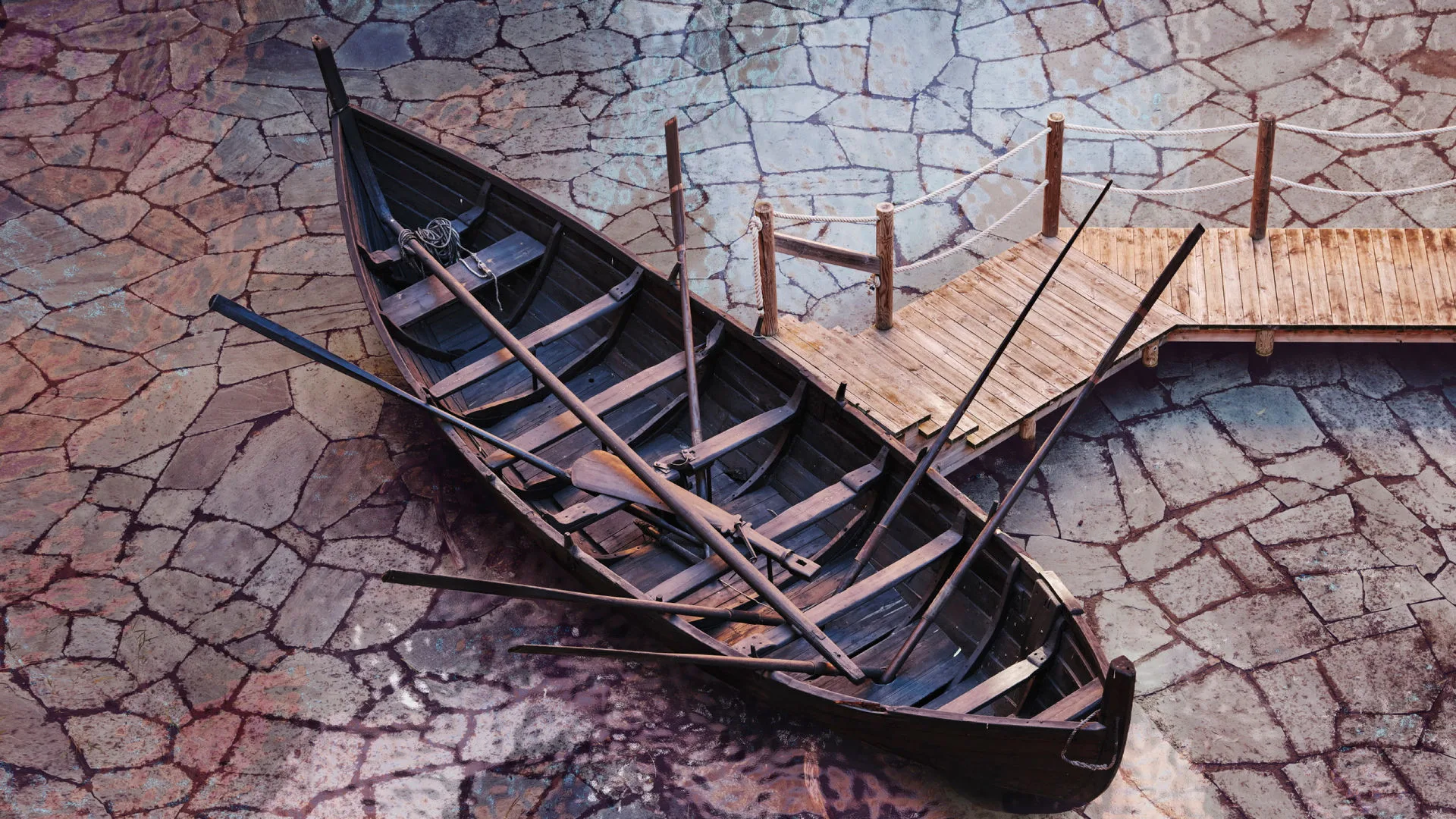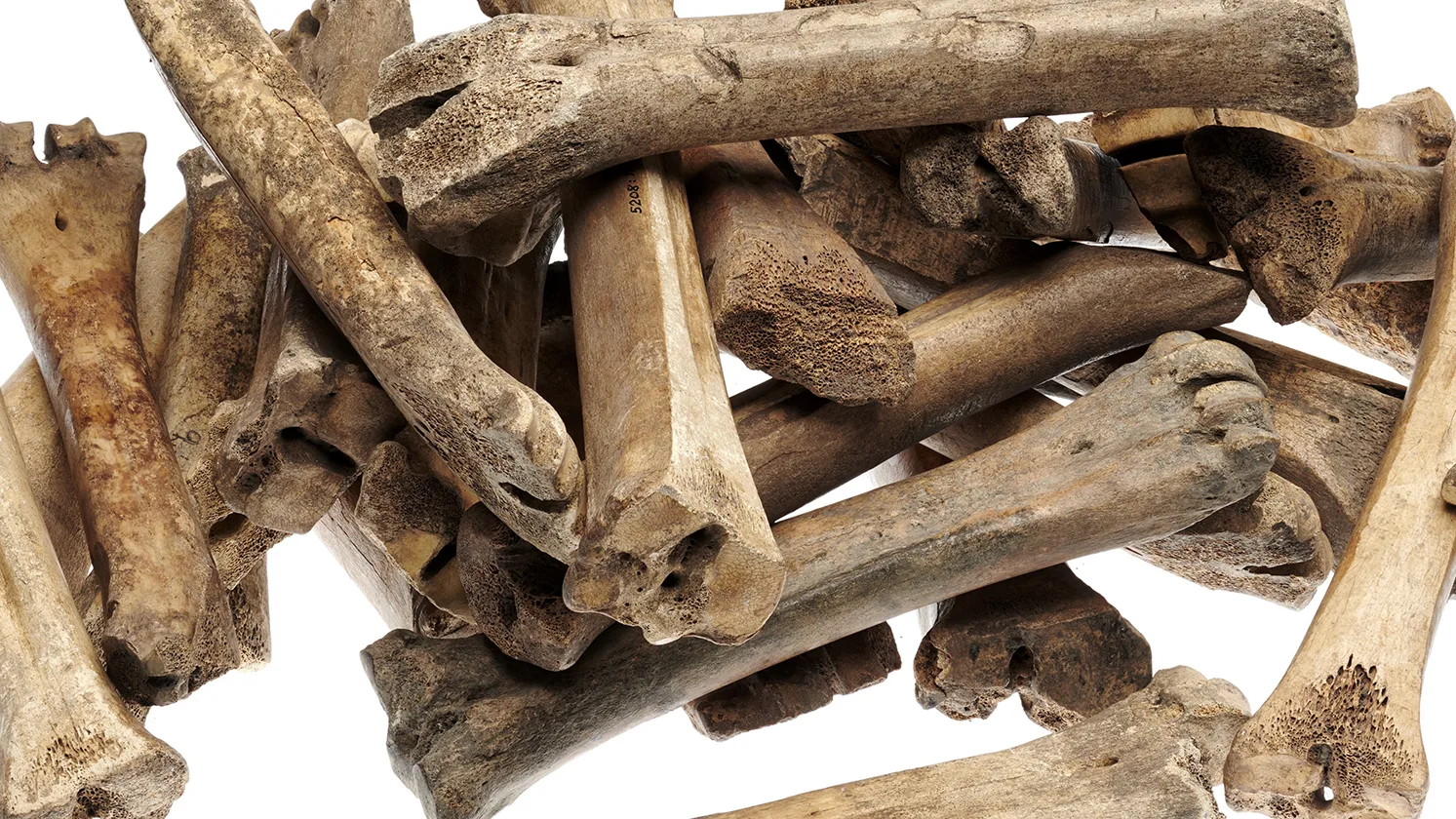The Klinta Staff – a Viking Age magic wand
Iron Age
500 BC – AD 1100
Viking Age
AD 800 – AD 1100
Middle Ages
AD 1050 – AD 1520
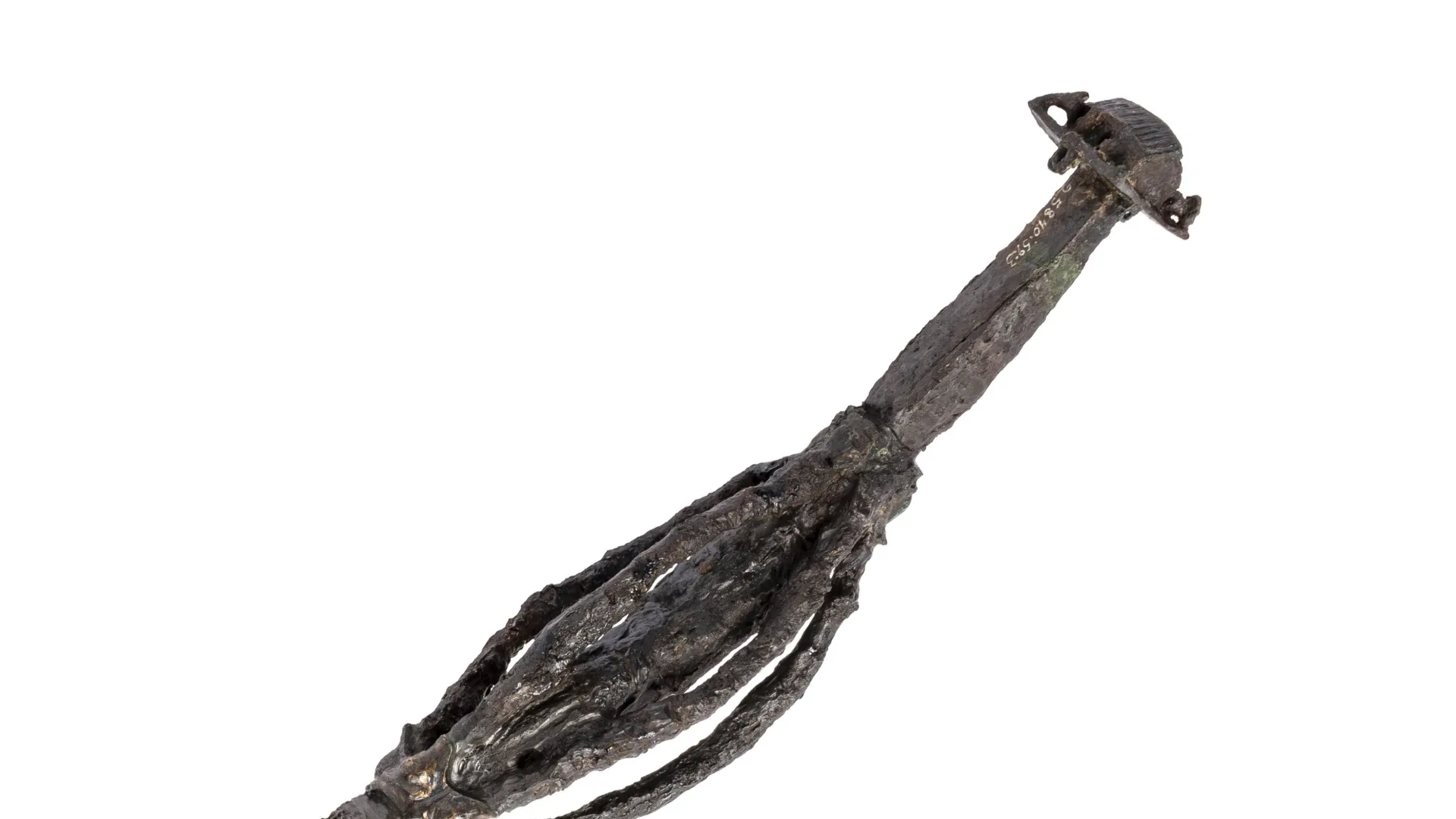
The völva’s characteristic object was her staff. Without it she could not perform seiðr, and the word völva itself means “staff-bearer”. The most magnificent of the so-called völva staffs is the one from Klinta in Köping parish on Öland.
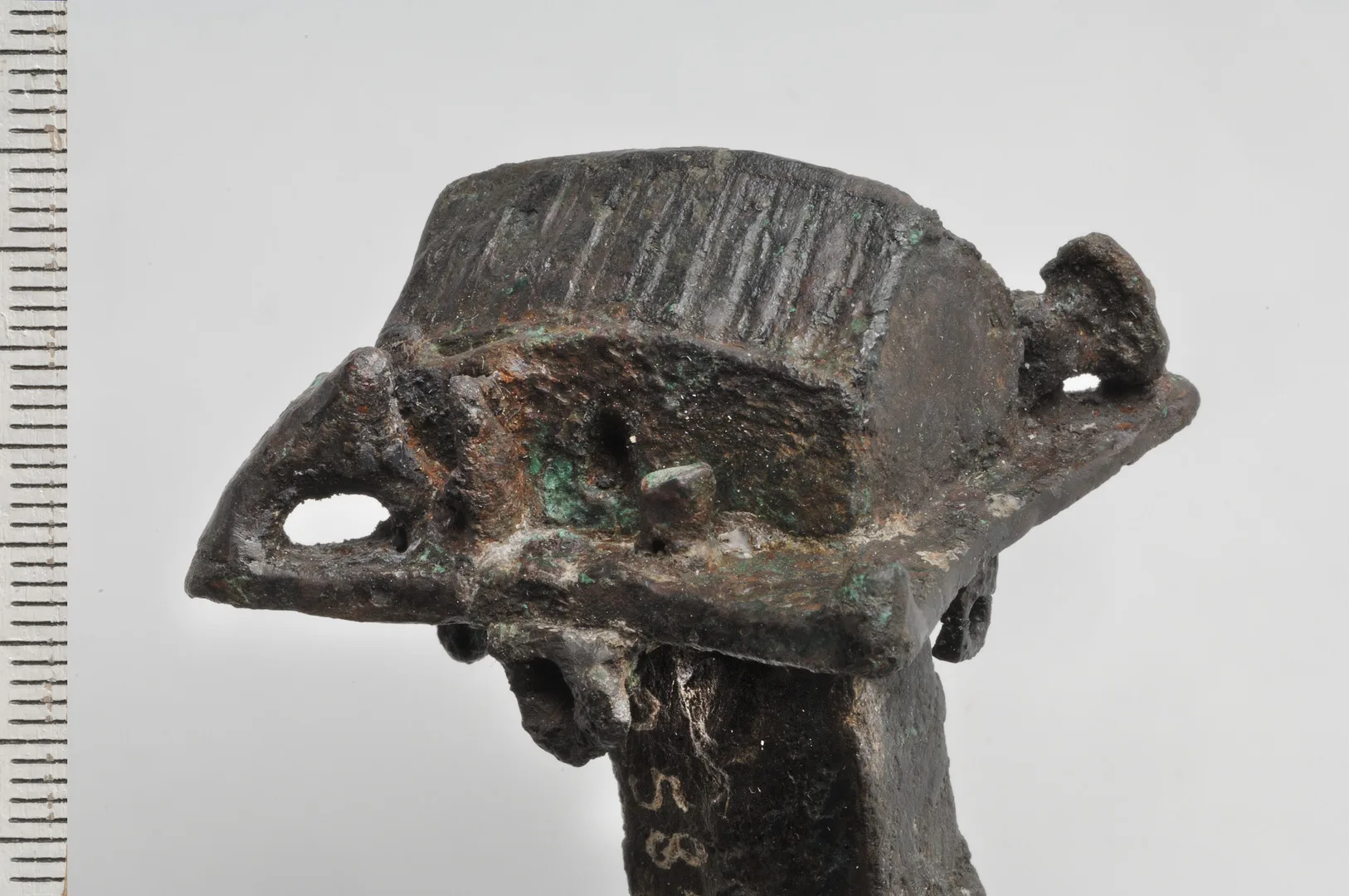
Staff
Iron staff. Found at Klinta, Öland.
The völva as a feared person
In Old Norse mythology the völva appears in several places. The most famous is perhaps the Völuspá (The Prophecy of the Völva), which opens the so-called Poetic Edda. There she foretells the downfall of the earth, the gods and the powers at Ragnarök.
It is not difficult to imagine that the völva was both respected and feared in contemporary society.
Völva staffs
The collections of the Swedish History Museum contain five so-called völva staffs. They are made of iron with bronze details and inlays. But they have not always been called völva staffs. They have at various times been interpreted as roasting spits, measuring rods or sceptres, depending on how scholars understood them.
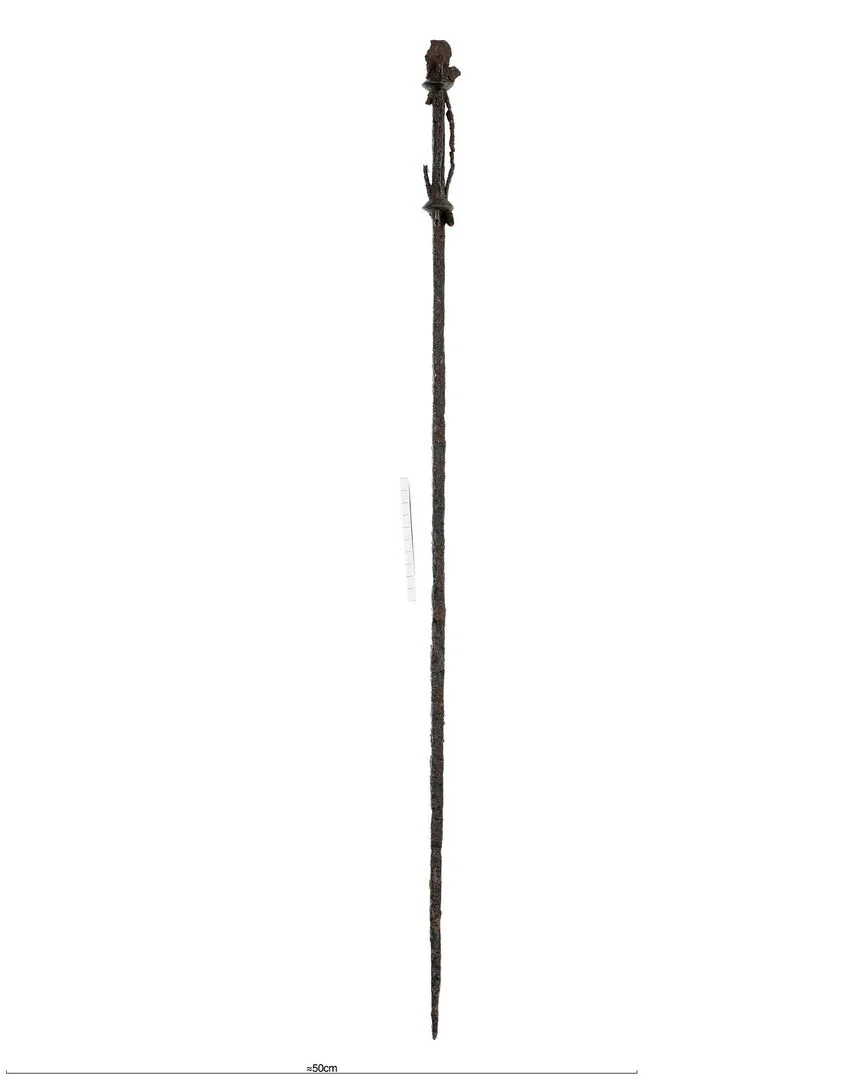
Staff
Iron staff. Found at Karlshult, Närke.
On view at Historiska museet in the exhibition Vikingarnas världFind this object in display 58, Vikingarnas värld Monter 58
The staff from Klinta was found in a cremation grave that also contained many other objects indicating that the woman buried there had been someone special. The staff is just under a metre long, but the broken lower end shows that it was originally longer.
At its upper end four iron rods form a kind of spool-shaped “basket” around the shaft, and the staff’s tip is crowned by a little house around which originally stood four animals, their heads turned towards its roof.
Seiðr as a divine gift
The ability to practise seiðr – to see into the future – was regarded as a divine gift. According to mythology it was the goddess Freyja who taught Odin and the other Æsir this art. Perhaps the house on the Klinta staff represents Odin’s hall, Valhalla, and the four animals might then symbolise the goat Heidrun, who grazes upon its roof. But the house may also depict Freyja’s dwelling, Fólkvangr.
Like other gods, Freyja had many names. One of them was Hörn, from the old word for flax (hör), which suggests that Freyja was seen as the protectress of flax cultivation. And here we may be approaching the answer to why the Klinta staff looks as it does.
The staff as a spinning tool
Before the spinning wheel was introduced into the old agrarian society, flax and linen thread were spun with the help of spindles and so-called distaffs. We know this from finds of spindle whorls made of fired clay or soapstone. At the top of these distaffs was a flax-holder around which the unspun flax was secured. These flax-holders took different shapes depending on local tradition.
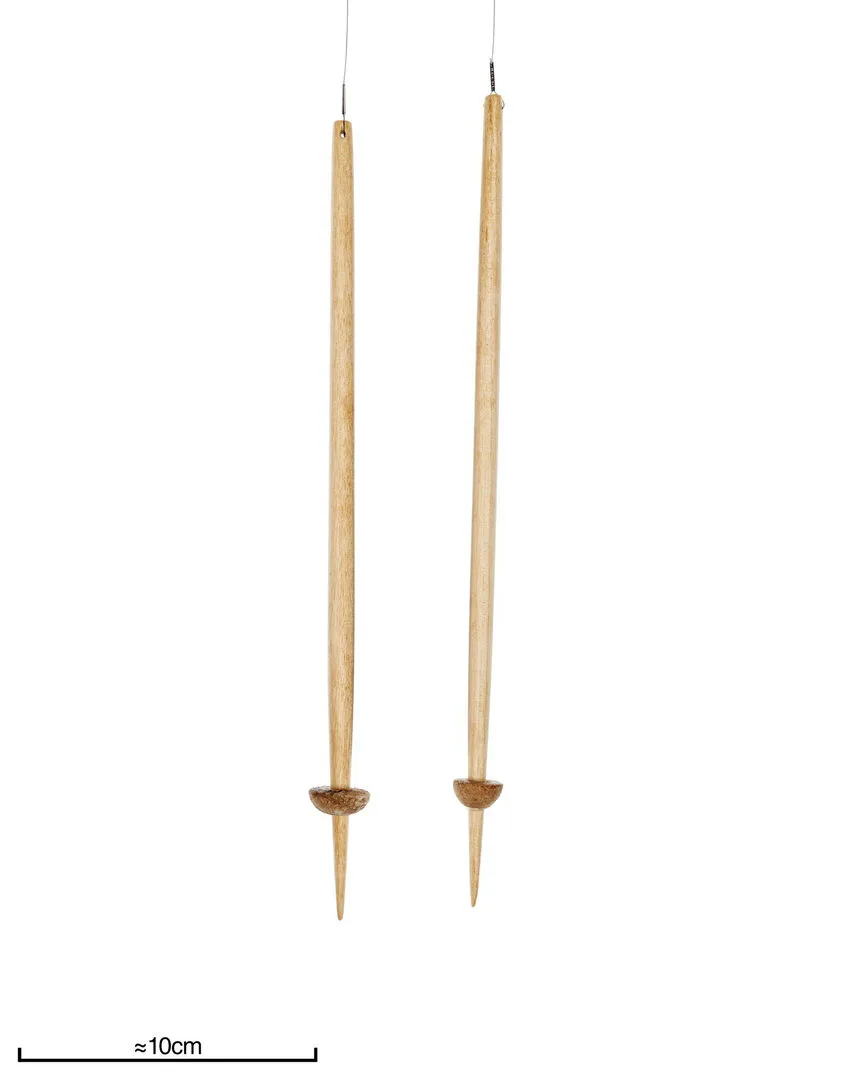
Spindle whorl
Made of amber, found in Broa, Halla parish, Gotland. The wooden spindle sticks are reconstructions.
The fate goddesses and the thread of life
To some, völva staffs may resemble distaffs. The connection between flax and Freyja is clear, but what of the connection between spinning, the völva and the practice of seiðr?
Once again the answer may lie in Old Norse mythology. There we are told that the three Norns (Urd, Verdandi and Skuld) sit spinning at the foot of the world tree, Yggdrasil. The Norns are a kind of fate goddesses who spin, measure out and cut off the thread of life (the flax). Their work resembles the völva’s seiðr and her visions of the future.
With her staff as a symbol of spinning the thread of life, the völva displayed who she was. And who knows, perhaps the staff itself is also a symbolic representation of the world tree itself?
